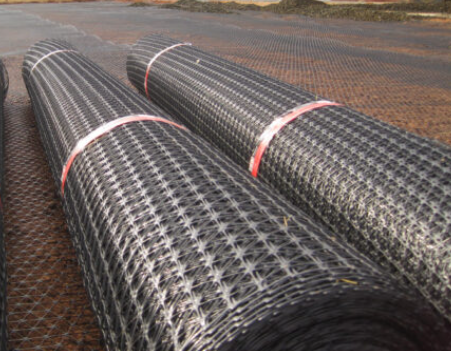- Understanding the Role of Geomembrane Liners in Waste Management
- Innovations in Geomembrane Liners for Water Management
- Geomembrane Liners: A Comprehensive Guide
- The Future of Geomembrane Liners in Civil Engineering
- Geomembrane Liners: Enhancing Landfill Stability
Manager:Alvin Wang
WhatsApp:+62 8983806051
Tel:+86 10-5797-1075
Email:steelwang@okorder.com
Address:3rd Floor, No.2 Building, No.1 Sanlihe Road
How wide is geogrid?
Geogrids, important constructions materials in civil engineering and construction projects, have been used to stabilize the soil, reinforce structures and improve infrastructure durability. As a result of increased need for effective and sustainable building materials, geogrid products have attracted more attention due to their versatility and efficacy. We delve into this inclusive guide that further investigates different types of geogrids available in the market including plastic geogrid, wholesale geogrid, fiberglass geogrid, as well as glassfiber geogrid with their widths and applications.

Plastic Geogrid: Enhancing Soil Stability
Plastic grids made from high-density polyethylene (HDPE) or polypropylene (PP) have superior strength and durability. These synthetic fabrics comprise intersecting tapes or bands which function to create a stiff grid capable of distributing loads effectively.
The width of these plastic grids is one crucial factor that must be accounted for when analyzing them; it ranges between 1m to 6m depending on various project requirements. This implies that if the grid is wider its coverage will also increase hence having the highest potential in terms of reinforcement particularly for large scale scenarios such as road construction, embankment stabilization and retaining wall reinforcement.
Wholesale Geogrid: Cost-Effective Solutions for Large Projects
Wholesale Geogrids provide an economical option for major ground reinforcement tasks without compromising quality. The reason behind this conclusion is that they come in a variety of widths allowing them to be applied to diverse aspects ranging from slope stabilization through erosion control measures.
Meanwhile, construction operations require very large amounts of material for reinforcing soils below ground level whereby therefore these products must be sold in rolls by widths rather than pieces each requiring individual packaging at every joint or connection point between layers within a given range which can go up from two meters right up till six meters. Purchasing in bulk allows contractors and engineers to take advantage of preferential prices while maintaining the best possible quality for use throughout the project site.
Fiberglass Geogrid: High-Tensile Strength for Structural Support
Dimensionally stable and with exceptional tensile strength, woven or knitted glass fiber reinforced plastic grids are ideal for applications requiring structural reinforcement, such as fiberglass geogrids. Since these products have relatively low creep rates even under static loads, they could be used for a long term period in aggressive environments.
Another key specification to consider is width which can vary between 1m to 5m depending on various project requirements like pavement reinforcement, soil stabilization and mine site reclamation among others. The high modulus of elasticity associated with them along with their resistance against chemical or biological degradation makes them dependable when it comes to improving the life of infrastructure projects.
Glassfiber Geogrid: Durability and Environmental Compatibility
Durability and environmental friendliness are some of the attributes that have made glassfiber geogrids popular amongst many users. These materials are weather resistant; they do not decay due either to exposure from ultraviolet light or chemicals hence their durability across different fields ranging from road construction through foundation strengthening aimed at land reclamation projects.
However, the widths of these glassfiber geogrids start at one meter up to four meters so that people may choose this fact whenever shaping plans related to any given sites. As a result, whatever the case may be regarding road construction, foundation reinforcement or land reclamations these fixtures can offer excellent means of enhancing stability as well as increasing firmness of any ground material.
Applications and Considerations
When selecting an appropriate geogrid width for a particular project certain factors must be considered such as soil properties, loadings requirements and installation limitations too. In addition, compatibility between surrounding environment and longevity predictions about performance would also influence choice of materials in which other factors count.
Plastic geogrids, with their extensive range of widths, can be well molded to fit large ground reinforcement projects including roads, railways and landfills. Wholesale geogrid is a low cost option for large scale applications that give contractors the freedom to maximize material usage and project budgets.
Fiberglass and glassfiber geogrids are usually applied in structural reinforcement like pavement overlays, bridge abutments and retaining walls as they have high tensile strength and long service life. They come in various sizes that can easily match any project requirements which ensure better performance and durability.

In summary, the effectiveness or appropriateness of different geogrids depends much on their width. Knowledge regarding specific characteristics and applications of plastic geogrids, wholesale geogrids, fiberglass geogrids as well as glassfiber ones would enable engineers and builders choose such elements carefully thus improving the stability, permanency, environmental acceptability of their constructions.”
- Previous:What is the minimum length of geogrid?
- Next:Can geogrid be cut?
-
2024-06-12Asphalt fiberglass geogrid construction plan
-
2024-06-04Asphalt fiberglass geogrid construction plan
-
2024-05-21What is the disadvantage of geogrid?
-
2024-05-21What is the lifespan of geogrid?
-
2024-05-21What are the 3 main uses of a geotextile?






